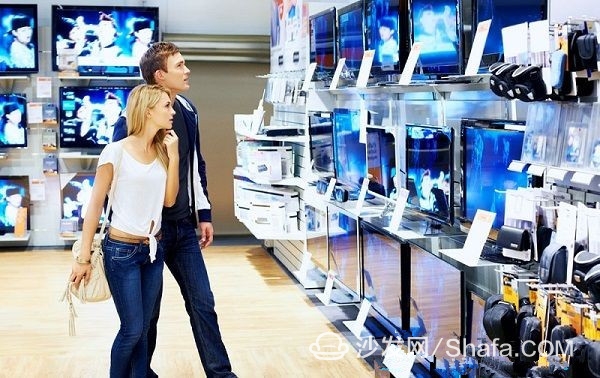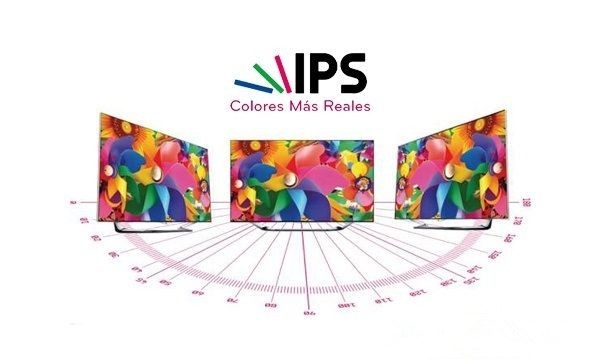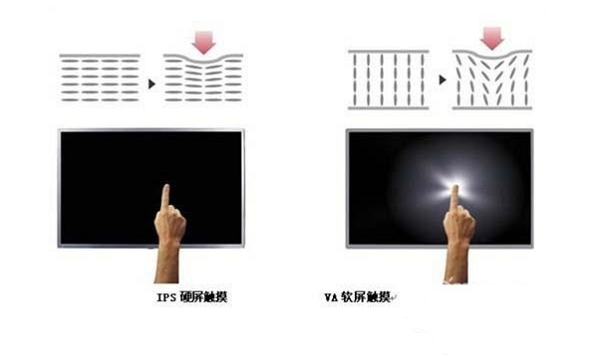What exactly is the TV screen? What are the mainstream TV screens in 2016?
A word popular in the TV industry market: Buying a TV is buying a screen.
TV is used to look at, the quality of the picture displayed on the TV screen has always been the concern of consumers, the internal chip hardware settings do not look out, but the TV broadcast, how is the picture quality is clear. The television screen that occupies 2/3 of the cost of television has received attention. With the increasing production of TV lines, the prices of large-size TV panels have also dropped. The data in the first half of this year showed that 55-inch has become the most popular size of consumers. At the same time, the quality display technology is also upgrading, and now smart TVs are basically equipped with 4K panels. Combining the actual situation, Xiao Bian took 55-inch 4K mainstream televisions including Xiaomi, Leshi, Little Whale, Storm, Kansang, Hisense and other Internet brand TVs and traditional TVs as an example. What is the TV screen that everyone is more concerned about? thing.

TVs on the market today, especially the rapidly developing smart TVs, are basically divided into two types of screens, which are commonly known as IPS hard screens and VA soft screens. The Sharp-specific CPA panel is strictly speaking a VA panel, but since it is only used on Sharp TVs, it does not have universality and is not described here. At present, LCD panel technology is concentrated in foreign TV manufacturers. VA camps include Samsung, AUO, Chi Mei and Sharp. IPS camps include LG-Philips joint ventures and Hitachi, Panasonic and Toshiba joint venture IPS-alpha two manufacturers.
VA panel
1.PVA panel - Samsung panel
PVA is an image vertical adjustment technology, which directly changes the structure of the liquid crystal cell, greatly improving the display performance, its viewing angle can reach 170 degrees, the response time can reach within 25 ms, and the over-drive mode can be used to accelerate the response time of the screen. The response time can also reach 8ms, 500:1 contrast and 70% color reproduction.
In addition, on the basis of these two types, two types of improved S-PVA and P-MVA panels have been extended, and the trend in technology has become more apparent. The viewing angle can reach 170 degrees and the response time is controlled within 20 milliseconds. Overdrive accelerates to 8ms GTG), and contrast can easily exceed the high level of 700:1. Most of Samsung's products are PVA LCD panels.
2.MVA panel - AUO panel
The full name is Multi-domain Vertical Alignment. It is a multi-domain vertical alignment technology. It is the use of protrusions to make liquid crystals stand still instead of the traditional vertical, but biased to a certain point of static; when the voltage is applied to the liquid crystal molecules to change the level to allow the backlight to pass through is faster, this can significantly reduce the display time, Also because the protrusions change the orientation of the liquid crystal molecules, so that the viewing angle is wider. The increase in viewing angle can reach 160 degrees and the reaction time can be shortened to within 20ms.
IPS panel

IPS panel technology is a liquid crystal panel technology introduced by Hitachi in 2001. It is commonly known as “Super TFT†and is currently the only hard-screen panel of TFT. The application field has been very broad since its development. Products using IPS hard screens are generally located at a higher level.
The most prominent feature of the IPS board is that its two poles are on the same plane, and the electrodes other than the liquid crystal mode are arranged on the upper and lower sides. Since the electrodes are on the same plane, the liquid crystal molecules are always parallel to the screen regardless of the state, which will reduce the aperture ratio and reduce the transmittance.
After the development of IPS panels, there are currently four types of H-IPS, E-IPS, AH-IPS, PLS and other market mainstreams, H-IPS is the most expensive, E-IPS emerged in 2009 as a cheap and economical model, and AH-IPS is in 2011. In the coming year, the price and quality floated. PLS mostly concentrated on Samsung's high-end products. Similar to AH-IPS, the prices were high.
Panel specifications
Some television screen descriptions will see words such as A, A+, etc. This is based on the product's comprehensive assessment and is divided into three levels: A, B, and C. Main level criteria:
AA grade: LCD monitor without any dead pixels is AA grade.
Level A: Below 3 bad spots, no more than one bright spot, and the bright spot is not in the center area of ​​the screen.
Level B: Below 3 bad spots, with no more than 2 bright spots, and the bright spots are not in the central area of ​​the screen.
Difference between hard and soft screens

The intuitive difference between the soft screen and the hard screen is that the soft screen is relatively soft, and there will be water ripples when gently sliding by hand. Hard screens basically do not have this phenomenon.
Compared with hard screens, hard screens have higher viewing angles, faster response speeds, and accurate color reproduction, but at the same time, there are light leakage problems. The purity of black colors is general and needs to be compensated by optical films.
Strictly speaking, soft-screen and hard-screen playback experience is not very different, but IPS is now used more, most of the current domestic TV manufacturers are using imported panels, for example, Xiaomi TV, LeTV, KKTV , whale TV, cool TV, watching TV and other brands use LG's IPS hard screen, marked Hisense TV is IPS screen. Solving the light leakage problem can basically become the core panel.
note:
In the domestic market, there are two kinds of RGB 4K panels and RGBW 4K panels. The so-called RGBW panel actually adds white on the basis of three colors of RGB, and its pixels constitute only two types (RG or BW). The biggest drawback of the technology is that its resolution may be only 1920 × RGBW × 2160, and the picture quality is not as good as the RGB in-line 4K panel. Basically, it may be called "pseudo-4K,†and consumers need to pay attention when purchasing.

TV is used to look at, the quality of the picture displayed on the TV screen has always been the concern of consumers, the internal chip hardware settings do not look out, but the TV broadcast, how is the picture quality is clear. The television screen that occupies 2/3 of the cost of television has received attention. With the increasing production of TV lines, the prices of large-size TV panels have also dropped. The data in the first half of this year showed that 55-inch has become the most popular size of consumers. At the same time, the quality display technology is also upgrading, and now smart TVs are basically equipped with 4K panels. Combining the actual situation, Xiao Bian took 55-inch 4K mainstream televisions including Xiaomi, Leshi, Little Whale, Storm, Kansang, Hisense and other Internet brand TVs and traditional TVs as an example. What is the TV screen that everyone is more concerned about? thing.

TVs on the market today, especially the rapidly developing smart TVs, are basically divided into two types of screens, which are commonly known as IPS hard screens and VA soft screens. The Sharp-specific CPA panel is strictly speaking a VA panel, but since it is only used on Sharp TVs, it does not have universality and is not described here. At present, LCD panel technology is concentrated in foreign TV manufacturers. VA camps include Samsung, AUO, Chi Mei and Sharp. IPS camps include LG-Philips joint ventures and Hitachi, Panasonic and Toshiba joint venture IPS-alpha two manufacturers.
VA panel
1.PVA panel - Samsung panel
PVA is an image vertical adjustment technology, which directly changes the structure of the liquid crystal cell, greatly improving the display performance, its viewing angle can reach 170 degrees, the response time can reach within 25 ms, and the over-drive mode can be used to accelerate the response time of the screen. The response time can also reach 8ms, 500:1 contrast and 70% color reproduction.
In addition, on the basis of these two types, two types of improved S-PVA and P-MVA panels have been extended, and the trend in technology has become more apparent. The viewing angle can reach 170 degrees and the response time is controlled within 20 milliseconds. Overdrive accelerates to 8ms GTG), and contrast can easily exceed the high level of 700:1. Most of Samsung's products are PVA LCD panels.
2.MVA panel - AUO panel
The full name is Multi-domain Vertical Alignment. It is a multi-domain vertical alignment technology. It is the use of protrusions to make liquid crystals stand still instead of the traditional vertical, but biased to a certain point of static; when the voltage is applied to the liquid crystal molecules to change the level to allow the backlight to pass through is faster, this can significantly reduce the display time, Also because the protrusions change the orientation of the liquid crystal molecules, so that the viewing angle is wider. The increase in viewing angle can reach 160 degrees and the reaction time can be shortened to within 20ms.
IPS panel

The most prominent feature of the IPS board is that its two poles are on the same plane, and the electrodes other than the liquid crystal mode are arranged on the upper and lower sides. Since the electrodes are on the same plane, the liquid crystal molecules are always parallel to the screen regardless of the state, which will reduce the aperture ratio and reduce the transmittance.
After the development of IPS panels, there are currently four types of H-IPS, E-IPS, AH-IPS, PLS and other market mainstreams, H-IPS is the most expensive, E-IPS emerged in 2009 as a cheap and economical model, and AH-IPS is in 2011. In the coming year, the price and quality floated. PLS mostly concentrated on Samsung's high-end products. Similar to AH-IPS, the prices were high.
Panel specifications
Some television screen descriptions will see words such as A, A+, etc. This is based on the product's comprehensive assessment and is divided into three levels: A, B, and C. Main level criteria:
AA grade: LCD monitor without any dead pixels is AA grade.
Level A: Below 3 bad spots, no more than one bright spot, and the bright spot is not in the center area of ​​the screen.
Level B: Below 3 bad spots, with no more than 2 bright spots, and the bright spots are not in the central area of ​​the screen.
Difference between hard and soft screens

Compared with hard screens, hard screens have higher viewing angles, faster response speeds, and accurate color reproduction, but at the same time, there are light leakage problems. The purity of black colors is general and needs to be compensated by optical films.
Strictly speaking, soft-screen and hard-screen playback experience is not very different, but IPS is now used more, most of the current domestic TV manufacturers are using imported panels, for example, Xiaomi TV, LeTV, KKTV , whale TV, cool TV, watching TV and other brands use LG's IPS hard screen, marked Hisense TV is IPS screen. Solving the light leakage problem can basically become the core panel.
note:
In the domestic market, there are two kinds of RGB 4K panels and RGBW 4K panels. The so-called RGBW panel actually adds white on the basis of three colors of RGB, and its pixels constitute only two types (RG or BW). The biggest drawback of the technology is that its resolution may be only 1920 × RGBW × 2160, and the picture quality is not as good as the RGB in-line 4K panel. Basically, it may be called "pseudo-4K,†and consumers need to pay attention when purchasing.

When you purchase a TV, pay attention to the live quality experience. After you have a detailed understanding of the TV panel, I believe that you will have sufficient self-judgment when you purchase TV.
Shenzhen ChengRong Technology Co.,Ltd. , https://www.chengrongtech.com